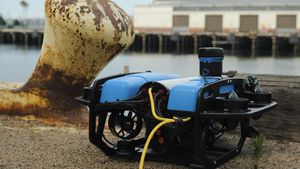Vietnam's transportation and service industries are embarking on significant transformations, characterized by innovative vehicle options and shifting recruitment strategies. The race toward electric vehicles, particularly multi-purpose vehicles (MPVs), is gaining momentum, responding to increasing demand from service providers. Meanwhile, companies are reimagining how they attract and retain talent amid competitive market conditions.
Electric vehicles have caught the attention of Vietnamese consumers, especially among those seeking cars for commercial use. The MPV segment is thriving, with more than ten variants available, appealing to various needs—personal, family, or service-oriented. Notably, Mitsubishi's Xpander has proven popular, having delivered nearly 20,000 units by 2024. Yet, the star of the recent market has been the VinFast VF 5 Plus, which sold over 32,000 units, earning it the title of best-selling car in Vietnam for the year. Positioned as an accessible option for those seeking vehicles for service, its affordability has made it particularly attractive.
The shift to electric is propelled by economic sensibility. Electric vehicles promise significant savings over fuel-powered alternatives, especially for high-usage applications. The appeal of reduced operating expenses is especially appealing as VinFast rolls out its 24/7 free charging policy at V-Green stations, effective from July 1, 2024, to June 30, 2027. The VF 5 Plus, priced at 480 million VND, becomes even more enticing with the addition of its battery pack option.
Despite the excitement surrounding electric MPVs, there’s still considerable skepticism. Current fully electric options for commercial seven-seaters are limited, with Haima 7X-E and BYD M6 struggling for traction among consumers. The Haima 7X-E's retail price of 1.23 billion VND puts it out of reach for many, and even with discounts, its appeal remains subdued. The BYD M6, priced at 756 million VND, competes fiercely but faces challenges due to limited charging infrastructure—a difficulty plaguing many EV brands, save for VinFast’s extensive network. Nonetheless, with plans for free charging at BYD’s dealers throughout 2025, it presents potential consideration for those locals considering electric for service.
Looking forward, the introduction of new electric models appears promising. VinFast has teased the 'Limo Green,' another MPV uniquely geared toward passenger transport services, set to launch later this year. With expectations of stellar performance and competitive pricing, the Limo Green could well capitalize on Vietnam's increasing shift to electric solutions. Using the same battery technology as the VF 5 Plus, it is projected to cover up to 470 km on full charge, positioning it favorably against both Haima and BYD offerings. The existing charging stations and VinFast’s support could help eliminate some common anxieties surrounding electric vehicle ownership.
While the transportation side is adapting, the labor market is facing turmoil. Companies across regions like Binh Duong, Dong Nai, Bac Ninh, and Hai Phong are finding innovative recruitment solutions to combat the persistent lack of manpower. Despite offering attractive benefits, wage incentives, and perks, firms are still struggling to fill necessary positions.
The post-Tet season traditionally fuels job hopping, but it seems to have lasting effects. Workers, particularly those displaced by the COVID-19 pandemic, are increasingly seeking alternatives outside traditional manufacturing. Many are exploring opportunities like labor export or self-employment, which adds complexity to the recruitment puzzle.
Local governments and businesses are confronting these challenges head-on. For example, companies are leveraging social media platforms and organizing mobile job fairs, allowing potential employees to engage directly within their communities. This local focus supports the flow of information and encourages direct interactions, which are often more appealing to today's job seekers. Binh Duong's Department of Labor, Invalids, and Social Affairs is also working on the “Southern Job Application” app, which aims to create regional connectivity for labor markets, benefiting both industries and job seekers.
Binh Duong serves as a particularly illustrative case. Once re-established, its industrial appeal has ushered rapid growth, boasting around 2.82 million residents, making it the third-largest province population-wise in Southeast Vietnam. Approximately 1.87 million residents are part of the workforce, predominantly within the industrial and construction sectors, indicating the local economy's robustness.
This proactive approach of taking jobs closer to prospective employees emphasizes the importance of be adaptable. For sustainable human resource solutions, companies must improve working conditions, build engaging workplaces, and support housing and living needs for remote workers. Only businesses with innovative, flexible mindsets will thrive and endure competition, leading to long-term growth.
Emerging trends within Vietnam's transportation and service industries highlight the intersection of changing consumer preferences and labor market dynamics, showcasing the nation's progress toward electrifying its vehicle market and redefining recruitment strategies.



